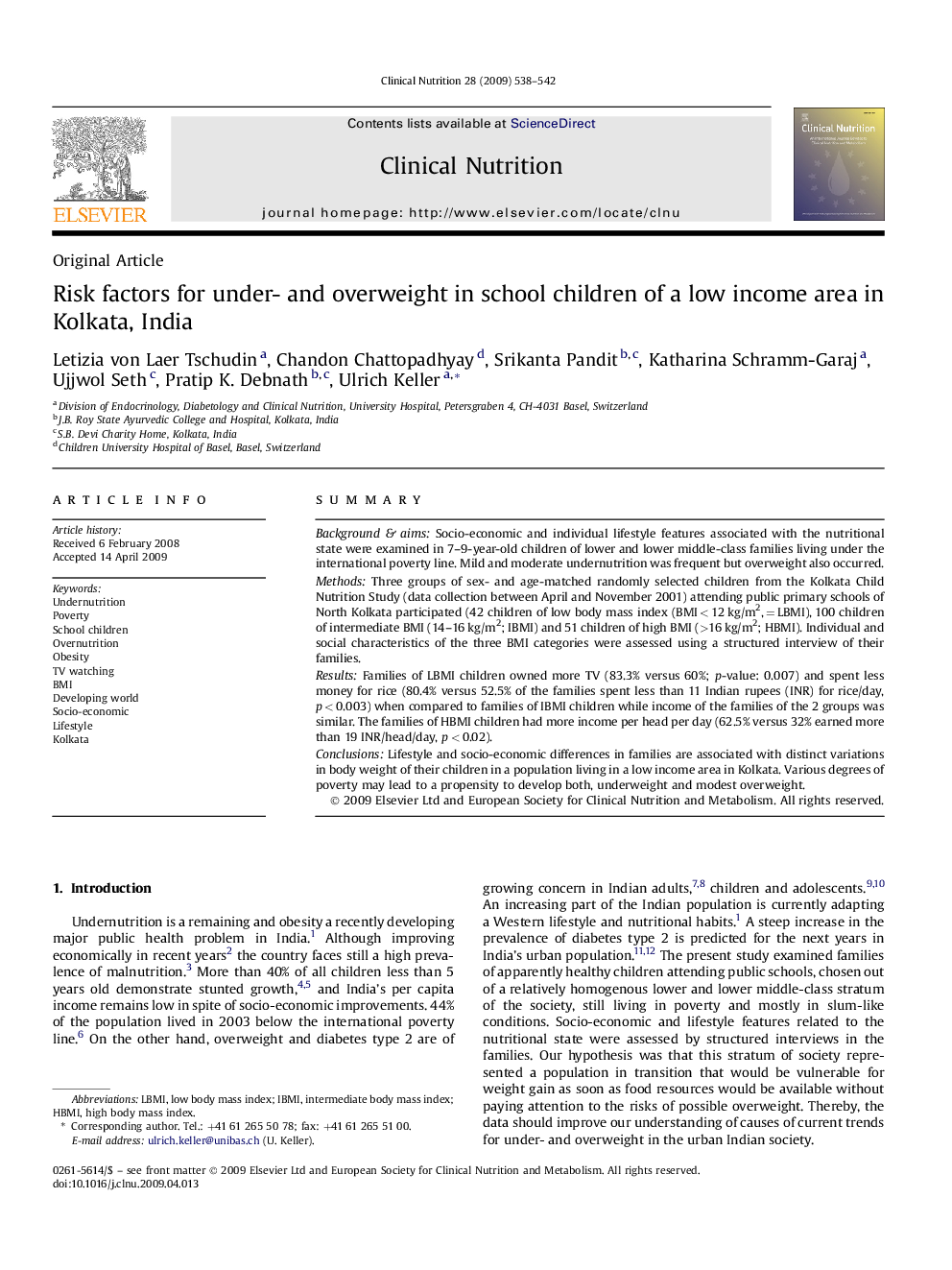| Article ID | Journal | Published Year | Pages | File Type |
|---|---|---|---|---|
| 2689909 | Clinical Nutrition | 2009 | 5 Pages |
SummaryBackground & aimsSocio-economic and individual lifestyle features associated with the nutritional state were examined in 7–9-year-old children of lower and lower middle-class families living under the international poverty line. Mild and moderate undernutrition was frequent but overweight also occurred.MethodsThree groups of sex- and age-matched randomly selected children from the Kolkata Child Nutrition Study (data collection between April and November 2001) attending public primary schools of North Kolkata participated (42 children of low body mass index (BMI < 12 kg/m2, = LBMI), 100 children of intermediate BMI (14–16 kg/m2; IBMI) and 51 children of high BMI (>16 kg/m2; HBMI). Individual and social characteristics of the three BMI categories were assessed using a structured interview of their families.ResultsFamilies of LBMI children owned more TV (83.3% versus 60%; p-value: 0.007) and spent less money for rice (80.4% versus 52.5% of the families spent less than 11 Indian rupees (INR) for rice/day, p < 0.003) when compared to families of IBMI children while income of the families of the 2 groups was similar. The families of HBMI children had more income per head per day (62.5% versus 32% earned more than 19 INR/head/day, p < 0.02).ConclusionsLifestyle and socio-economic differences in families are associated with distinct variations in body weight of their children in a population living in a low income area in Kolkata. Various degrees of poverty may lead to a propensity to develop both, underweight and modest overweight.
